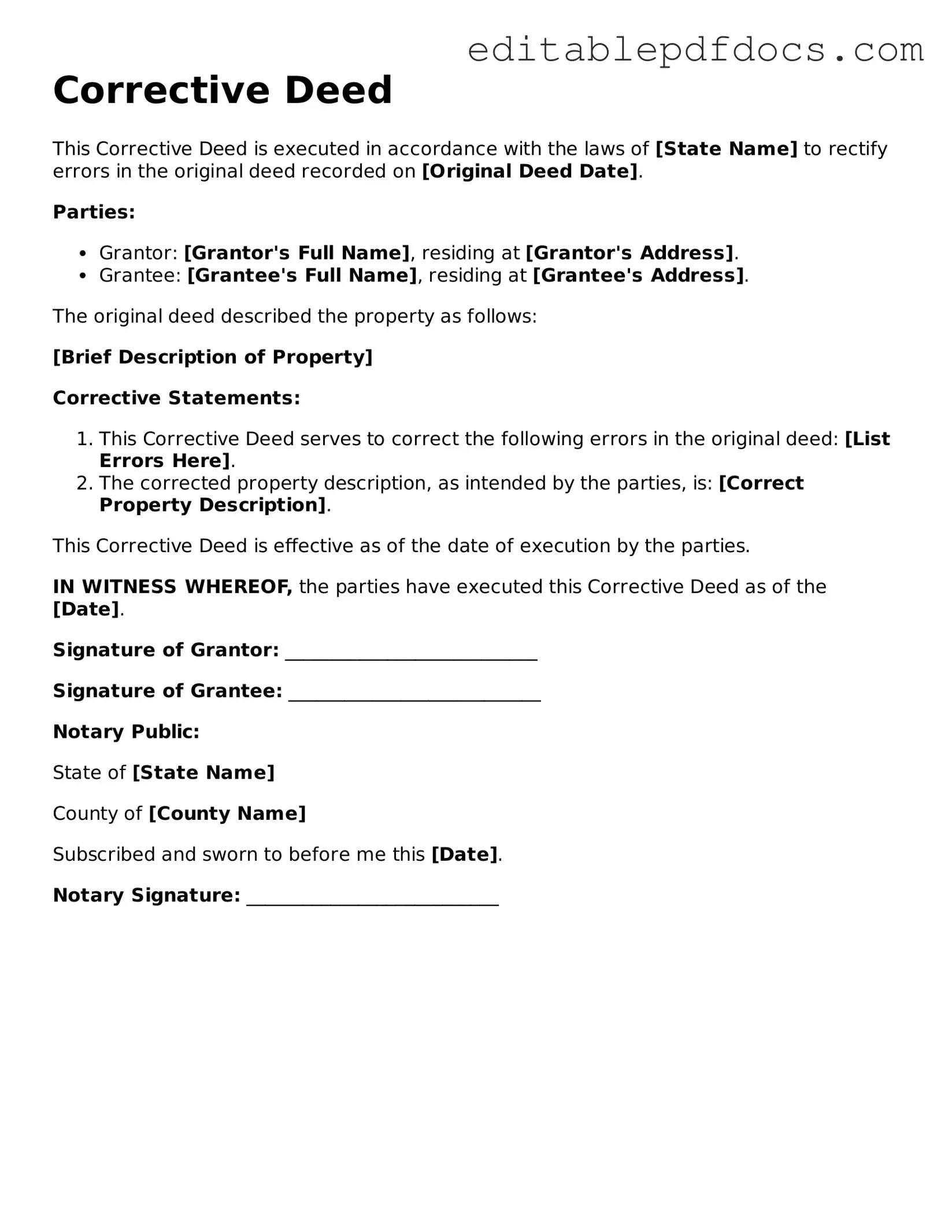Filling out a Corrective Deed form can be a straightforward process, but many individuals make common mistakes that can lead to complications. One of the most frequent errors is failing to provide accurate property descriptions. When the legal description of the property is incorrect or incomplete, it can create confusion and may render the deed ineffective. Ensure that the description matches the original deed precisely, including lot numbers and boundaries.
Another mistake often seen is neglecting to include all necessary parties. If any co-owners or interested parties are omitted from the form, it may result in legal disputes down the line. All individuals with a vested interest in the property should be included, and their signatures are typically required to validate the deed.
People also sometimes overlook the importance of notarization. A Corrective Deed must be notarized to be legally binding. Without a notary's acknowledgment, the deed may not hold up in court. Always ensure that the document is signed in the presence of a notary public before submission.
Inaccurate dates can pose another significant problem. Failing to record the correct date of execution or the date of the original deed can lead to issues regarding the chain of title. It is essential to double-check all dates for accuracy to avoid potential disputes in the future.
Many individuals forget to review the entire form before submission. This oversight can lead to typographical errors or incomplete information that may delay the processing of the deed. Taking the time to carefully review each section helps catch mistakes that could otherwise complicate matters.
Finally, people often underestimate the importance of consulting with a legal professional. While filling out a Corrective Deed may seem simple, having an expert review the document can help identify potential issues and ensure compliance with state laws. Seeking guidance can save time, money, and frustration in the long run.
